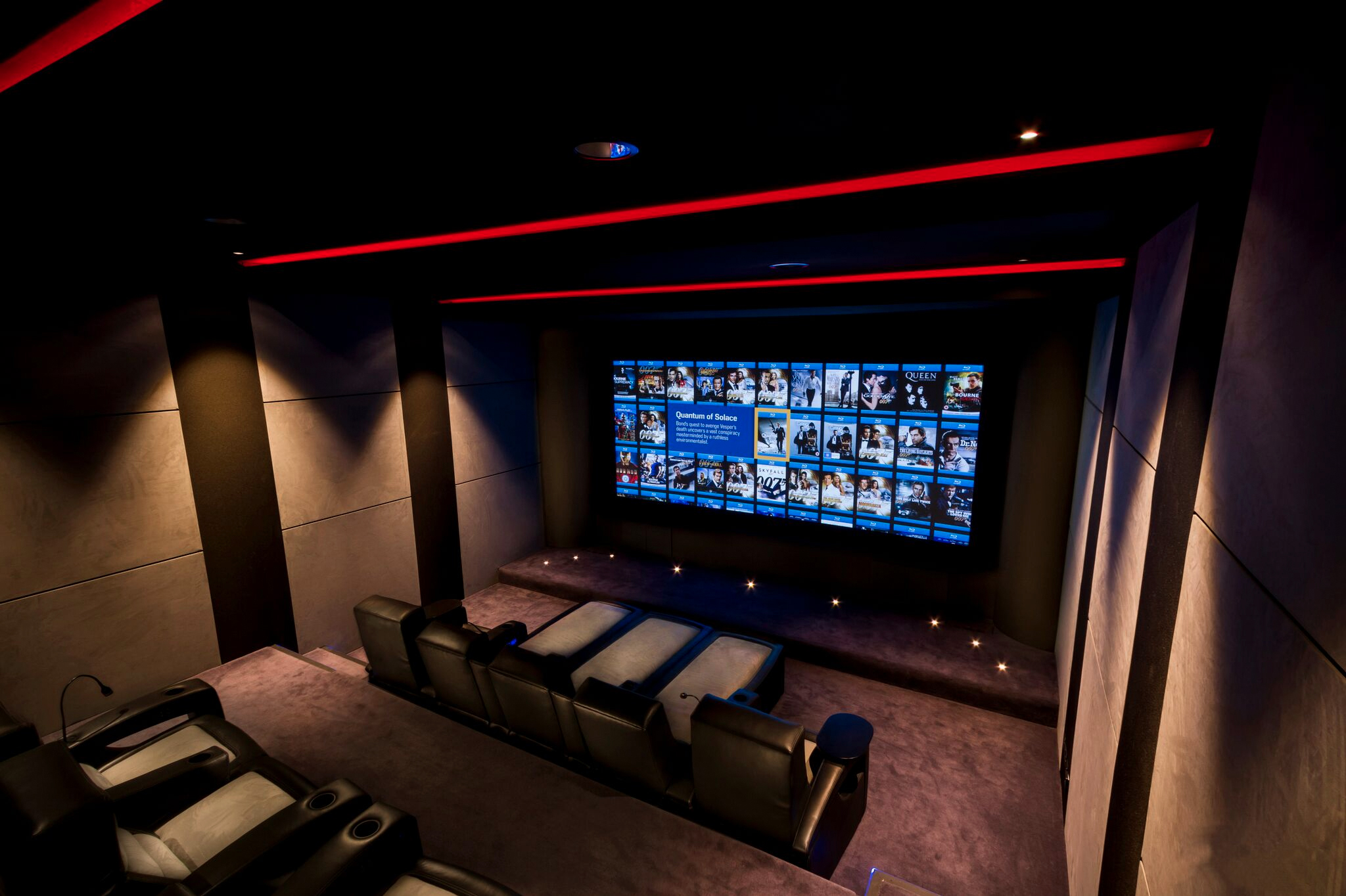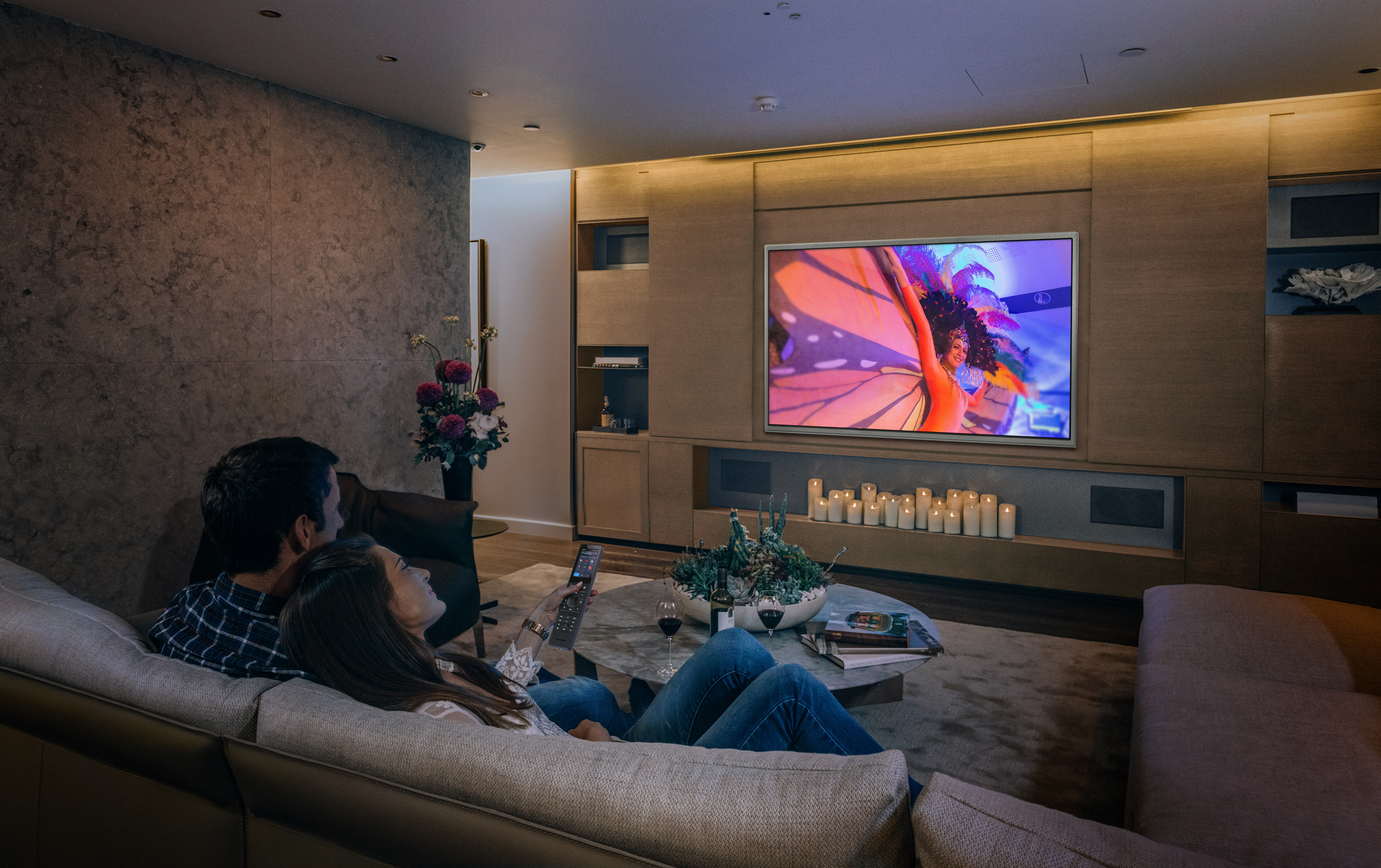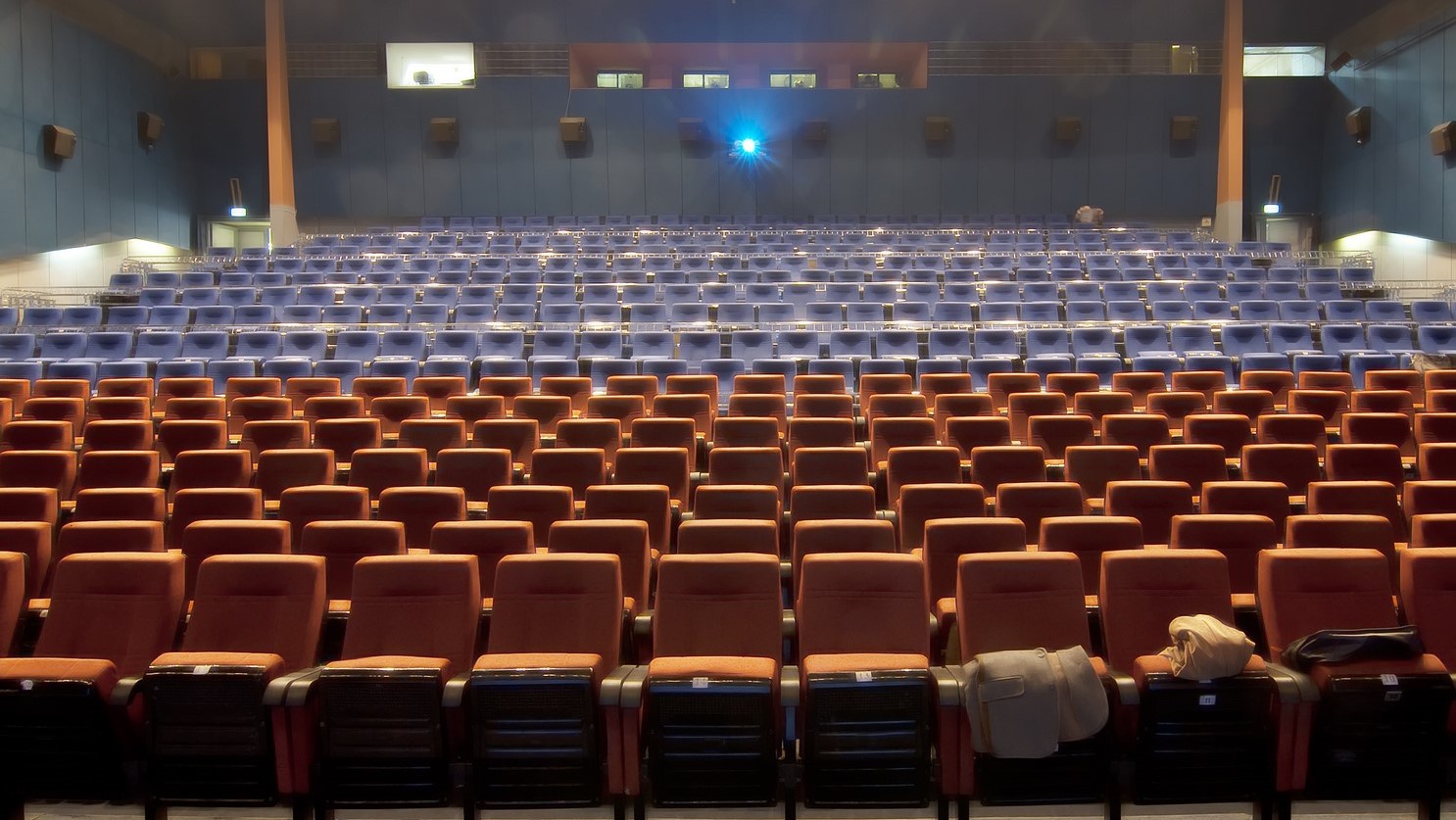The art of story telling
Home cinema design is somewhat a mixture of art and science. Since the dawn of mankind we have told stories through the use of words and pictures. Pictures on a cave wall told of great hunting battles, stories and songs passed down from generation to generation have modelled our heritage.
Telling stories also created a feeling of togetherness and community. As babies our parents read us stories as a way of comforting us at night, or sparking our imagination, or just to pass the time. And as we grow up the hunger for that escapism never leaves us and we develop a desire for more advanced storytelling. Our love of stories has become so great that we have even invented ways to generate moving pictures that we can watch on huge screens.
Cinema is the modern-day form of storytelling, whether it be a Hollywood blockbuster, a Netflix Boxset or even gaming.
A home cinema is now a must-have in the prime residential market. But surely, a sheet hung on a wall and a projector borrowed from the office is all you need. Why then do budgets run from £15k to half a million pounds and upwards?
The technology has changed a little, but watching a movie is still about being taken off to a Galaxy far far away. Where good and evil meet and battle it out until, eventually good conquers all. Fortunately for us in the UK it’s something that is not weather dependent. In fact, there are few greater pleasures than lighting a fire and curling up with loved ones when it’s cold and rainy outside and watching a movie together.
In this first part of our Home Cinema Design post, we discuss image display. Projectors, screens and a little bit of room design. In Part 2, we will cover Audio, including acoustic treatment. And then in Part 3 we will talk about everything else.



